This will be my last post of 2024, and I want to return to this blog’s visual arts roots. This is a list of some of the artists and art-adjacent people who we lost in 2024 from Houston and beyond. I was personally acquainted with a small number of them, and I treasured those friendships. But even for those on this list who I never met, they meant something to me personally. One thing that occurred to me as I compiled this memorial list was that my Houston readership might want to know where they might see examples of these artists’ artwork in town. So if they have any work in Houston, I shall try to mention it.
Frank Auerbach was an English painter who was a contemporary with Francis Bacon and Lucien Freud—and like them, he specialized in very expressionistic, painterly canvases—particularly portraits and figures. As far as I can tell, Houston’s big museums do not own any Auerbach canvases (but if you find yourself in London, the Tate has tons of Auerbach), but the Museum of Fine Art does own a photograph of Auerbach taken by Timothy Greenfield-Sanders, which I reproduce below.
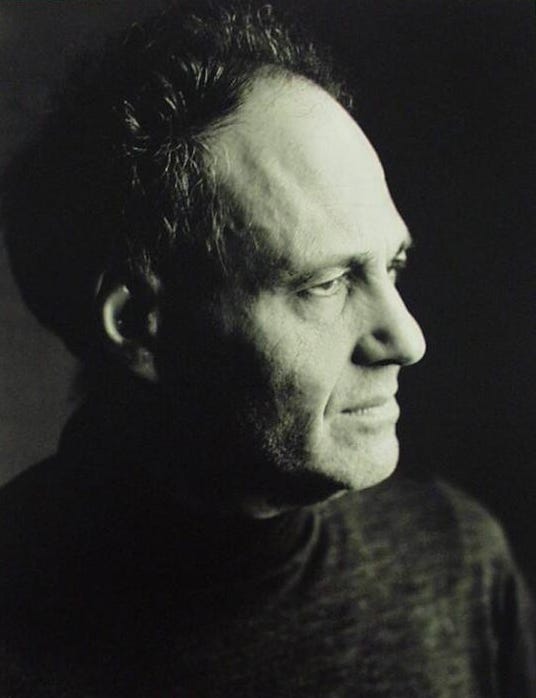
Like Lucien Freud, Auerbach was a childhood refugee from the Nazis. He was transported from Berlin to England in 1939 as part of the Kindertransport, in which Jewish children were transported to England for safety. Both of Auerbach’s parents were murdered at Auschwitz.
Derek Boshier was an English artist who ended up living in America—including a notable stint in Houston teaching at the University of Houston during the 80s. I wrote about a recent book of his recently. He has numerous artworks at the Museum of Fine Arts, including Everyday Opera (below).
I met Boshier on a couple of occasions. He was a very charming and is clearly beloved amongst the Houston art students who took his classes at UH during the 1980s.
James Harithas was a curator who ended up in Houston in the running the CAMH for a few years in the 70s. That account doesn’t come close to explaining the impact Harithas had on the Houston art scene ever since his dramatic CAMH tenure. Harithas was a pioneer in showing art by Texas artists (Houston previously had an inferiority complex about its own art, the condition that Robert Hughes described as “cultural cringe” where persons on the outskirts of the artistic metropole feel like mere imitators of the real artists from the center). But the politics of running a public museum where you are answerable to a board of directors didn’t work for Harithas, so he and his wife founded two oddball, completely private Houston art institutions—the Art Car Museum and the Station Museum. The former devoted to an artform initially practiced by artistic oddballs like Jackie Harris and now practiced by ambitious middle school art classes, the latter devoted to political art. Ann Harithas died in 2021, and now that Jim Harithas has died, both the Art Car Museum and the Station are gone as well.
Vinod Hopson was an artist and arts administrator who I got to know when he working for FotoFest, Houston’s venerable photography biennial. He helped me arrange a three part post on how to run a festival like FotoFest, which I’m still proud of. But Hopson was himself an artist, and his artwork was partly photographic, but partly a variety of activities around uncovering some aspects of Houston past and present. These included bus and walking tours he conducted over several years. I will miss seeing Hopson at various art events—the main places where our paths crossed.
Meredith “Butch” Jack died this summer. He was a great, much beloved local sculptor, about whom I wrote many posts over the years.
Floyd Newsum taught art at University of Houston Downtown. He had a huge retrospective there in 2018 that I wrote about for Glasstire. It was an eye-opening exhibit, but I remember thinking that Floyd deserved a more august space than the tiny O’Kane Gallery. But as I think about it now, it seems appropriate that UHD would so honor one of their best art professors.
You can see a large somewhat wacky Newsum sculpture, Planters and Stems, on Main Street downtown (a few blocks from where I live—so I see it frequently), and a large four painting group, Contemplating Success, in the Commerce Street building at UH Downtown. The MFAH also has two Newsum paintings.
Faith Ringgold died at the ripe age of 93 in April of this year. She is the subject of one of my favorite pieces in the Menil collection.
An important activist artist, she is represented in Houston museum collections by one dramatic piece at the MFAH.
Lucas Samaras was an eccentric New York artist whose artwork didn’t really fit into any recognizable school. If there is anything that can identify his art, it is a sense of self-obsession. A sense that his own personal history is art enough. Now that I write this, I notice Samaras’s art reminds me of Ilya Kabakov’s in a way. He has several works at the MFAH and at least one at the Menil.
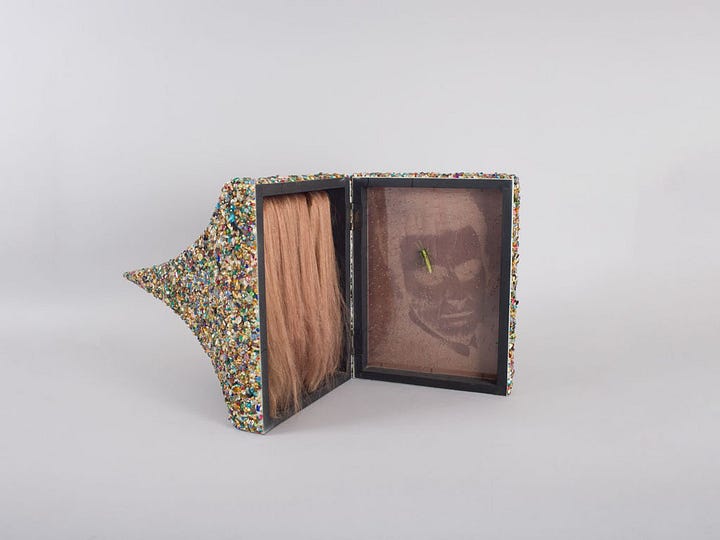

Richard Serra was a minimalist sculptor of massive slabs of rusty steel, fabricated into gentle curves, propped up in often precarious-looking ways. These sculptures are overwhelming, and for some reason, Houston has none of them. How can we be a great city without one? I propose that we convoy up to Fort Worth and steal Vortex from the front lawn of the Modern. We did have an amazing exhibit of Serra’s drawings (wall-sized all-black painted objects—Serra called them “drawings” despite the fact that he used paintsticks to apply the medium) a few years ago at the Menil. The MFAH also has some of Serra’s drawings.
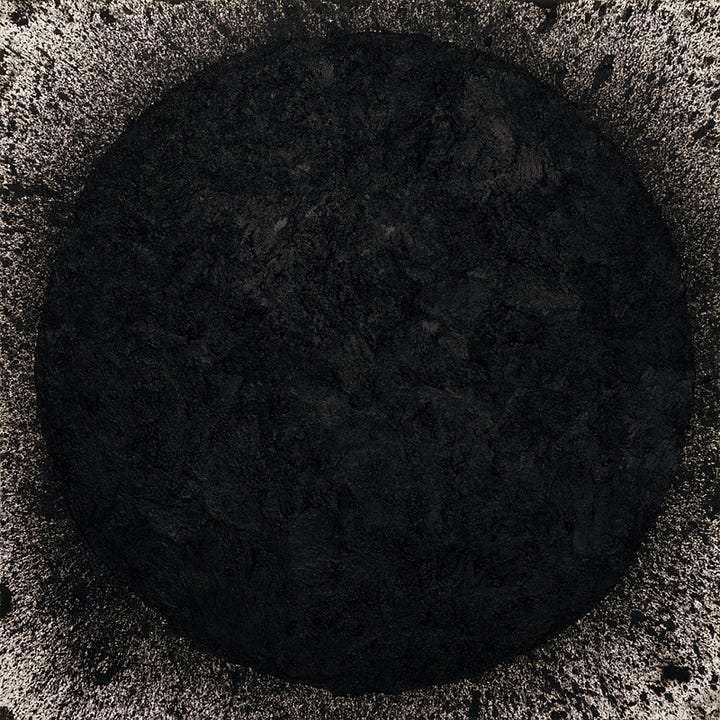
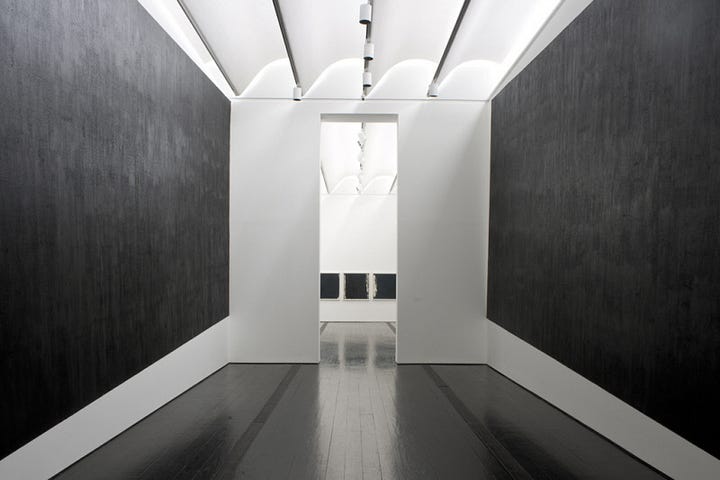
Anya Tish was a gallerist in Houston. I visited her gallery on Montrose dozens of times over the years, writing about exhibits there frequently. Tish was the daughter of two Polish Holocaust survivors, and it was her lifelong connection with Eastern Europe that defined at least part of her mission as a gallerist—she showed a large number of Eastern European artists. But although she had that particular area of interest, she also showed many Houston artists. She provided an artistic home for one of Houston’s weirdest artists, the great H.J. Bott.
Michael Tracy was a highly spiritual artist. He produced performances such as Sacrifice I, made in the Imperial Sugar Warehouse in Galveston out of sugar. Eventually Tracy relocated to San Ygnacio, Texas, a hamlet on the Texas/Mexico border, where he continued to engage in ritualistic art activities, financing them with an occasional exhibit in Houston. The MFAH has a large number of Michael Tracy artworks, including the tiny Epiphany (below).
The former alter boy shines through.
Frank Stella was a pioneering minimalist who gradually converted to a maximalist. At first he employed only neutral colors and straight lines in his canvases. They were weirdly bracing. But he got out his old protractor out and started making curved lines and adding bright colors and adding a little more and then a little more until his art became a visual cacophony. Which I loved. Both the MFAH and the Menil possess numerous Stellas, including the massive, 50 feet wide Damascus Gate hanging in the atrium of the Kinder Building. Houstonians are not starved for choice if they wish to see Frank Stella paintings, but my favorite Stella is his massive architectural decoration of the Moores Opera House at the University of Houston. Every time I see an opera there (and I’ve seen several), I love to spend some time with Euphonia, Stella’s intensely active, almost baroque decoration.
Bill Viola was a pioneer video artist. I think I first saw some of his work at the Contemporary Arts Museum back in the 80s, I think. I remember at the time being utterly perplexed by it, but what I have learned seeing Viola’s video works over the years is that understanding is not the point—letting it wash over you is the right stance to take when faced with one of these videos (which are typically quite large in a museum setting). The MFAH has one of Viola’s videos, Ascension (2000).
[Please consider supporting this publication by becoming a patron, and you can also support it by patronizing our online store. And one more way to support this work is to buy books through The Great God Pan is Dead’s bookstore. ]






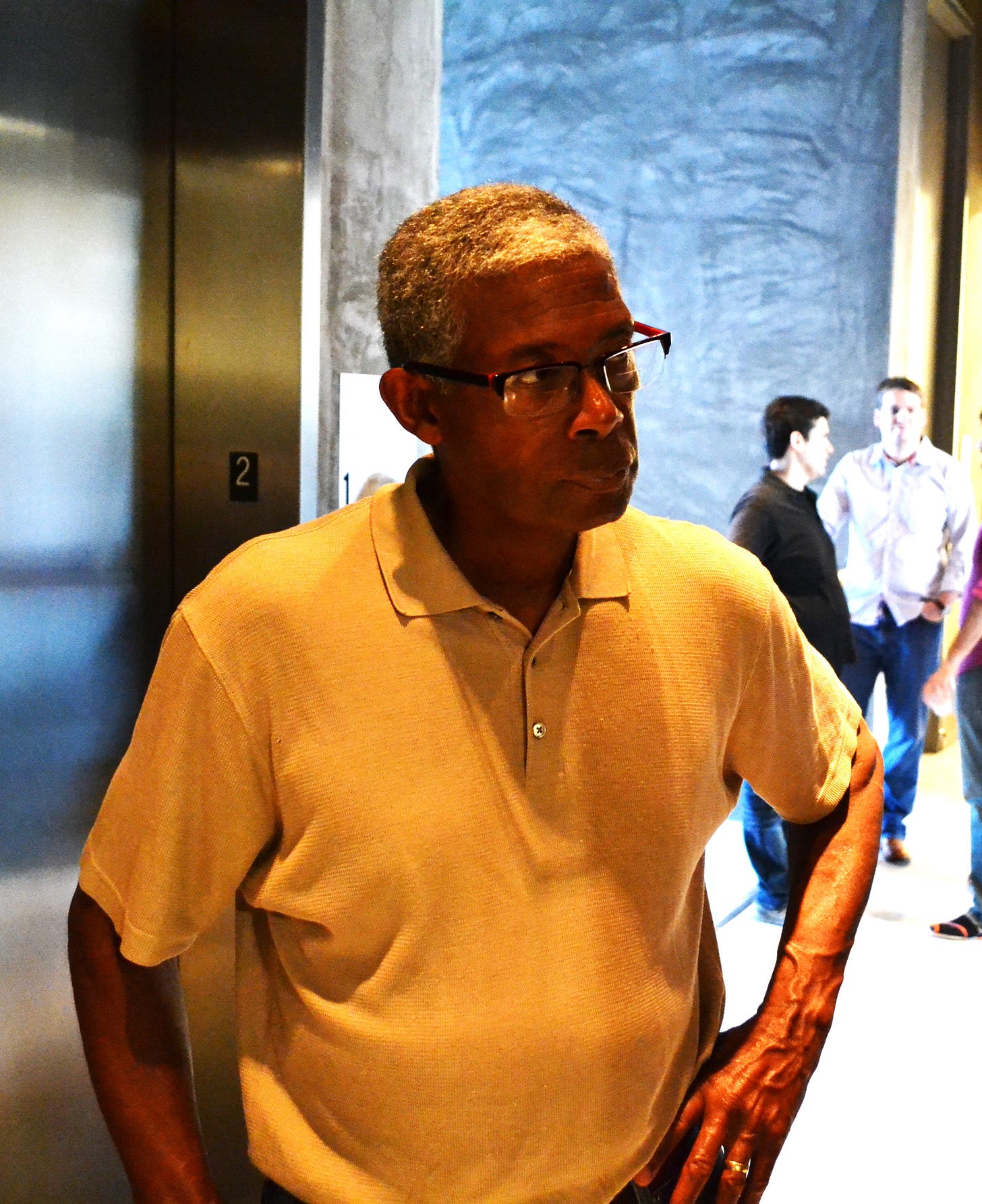




Terri Thornton (July 8, 1958 - December 17, 2024) Fort Worth, Texas
Great post Robert